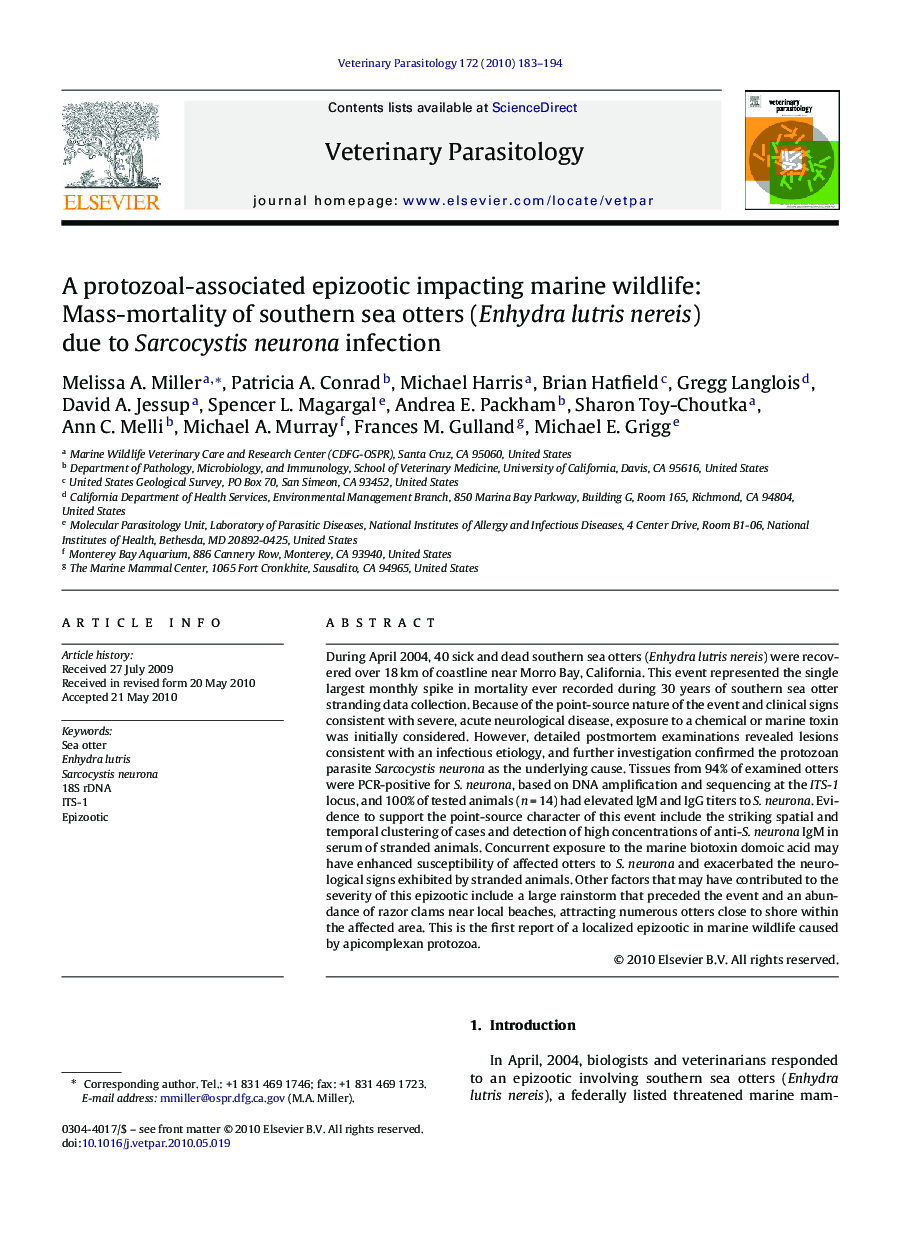| Article ID | Journal | Published Year | Pages | File Type |
|---|---|---|---|---|
| 2470386 | Veterinary Parasitology | 2010 | 12 Pages |
During April 2004, 40 sick and dead southern sea otters (Enhydra lutris nereis) were recovered over 18 km of coastline near Morro Bay, California. This event represented the single largest monthly spike in mortality ever recorded during 30 years of southern sea otter stranding data collection. Because of the point-source nature of the event and clinical signs consistent with severe, acute neurological disease, exposure to a chemical or marine toxin was initially considered. However, detailed postmortem examinations revealed lesions consistent with an infectious etiology, and further investigation confirmed the protozoan parasite Sarcocystis neurona as the underlying cause. Tissues from 94% of examined otters were PCR-positive for S. neurona, based on DNA amplification and sequencing at the ITS-1 locus, and 100% of tested animals (n = 14) had elevated IgM and IgG titers to S. neurona. Evidence to support the point-source character of this event include the striking spatial and temporal clustering of cases and detection of high concentrations of anti-S. neurona IgM in serum of stranded animals. Concurrent exposure to the marine biotoxin domoic acid may have enhanced susceptibility of affected otters to S. neurona and exacerbated the neurological signs exhibited by stranded animals. Other factors that may have contributed to the severity of this epizootic include a large rainstorm that preceded the event and an abundance of razor clams near local beaches, attracting numerous otters close to shore within the affected area. This is the first report of a localized epizootic in marine wildlife caused by apicomplexan protozoa.
